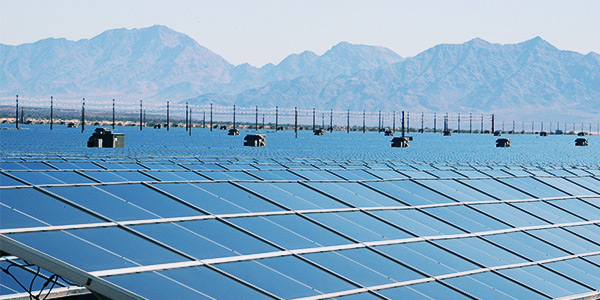California must build generating resources at an unprecedented pace to reach its goal of supplying 100% renewable and zero-carbon energy to retail customers by 2045, according to the draft results of a study released last week.
Senate Bill 100, signed by Gov. Jerry Brown in 2018, established the landmark clean-energy mandate and required the California Energy Commission (CEC), Public Utilities Commission and Air Resources Board to report to the State Legislature by Jan. 1, 2021, on factors such as technologies, transmission and reliability.
A joint agency workshop Wednesday focused on draft modeling results developed by CEC staff and consultants from Energy and Environmental Economics. Key takeaways from the modeling included a finding that “sustained record-setting build rates will be required to meet SB 100,” said Liz Gill, an electric generation system specialist with the CEC, who presented the draft results.
Over the past 10 years in California, developers built an average of 1 GW of solar generation and 330 MW of wind generation each year, Gill said. Battery storage had a negligible yearly “build rate” over the same period, though about 1,000 MW is now installed, she said.

California needs an additional 70 GW of utility-scale solar to reach its clean-energy mandate. | U.S. Department of the Interior
Reaching SB 100’s goals by 2045 requires roughly tripling the construction of wind and solar generation and dramatically increasing battery capacity, Gill said. The modelers estimate the state needs an annual build rate of 2.7 GW of solar, 2.2 GW of storage and 1 GW of wind each year over the next 25 years, she said.
However, the build rate will probably gradually increase through 2030, with the state “playing catchup” and building resources at a much faster clip from 2030 to 2045, she said. (The state is required to hit a 60% renewable portfolio standard by 2030.)
Under a “high electrification” scenario, with consumers switching from gas to electric appliances, the state must add 180 GW of new capacity, including 70 GW of utility-scale solar and 50 GW of storage to reach SB 100’s goals, Gill said. The land required for so much wind and solar is substantial. Solar projects alone could occupy nearly 500,000 acres, Gill said.
The study assumes utility customers will install 39 GW of rooftop and on-site solar by 2045. Wind, including new sources of out-of-state wind and offshore wind in California, will make up the additional 20 GW, the analysts forecasted.



